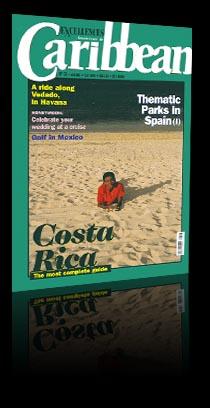Music El Son
A synthesis of the Cuban music, rhythmic variants are all set in a single body in this genre as well as the different ways of percussion. Son is the most genuine expression of Cuban nationality. This genre extended beyond its borders to exert its influences on other countries and at present, son has turned into a hybrid of rock, rap, cumbia, jazz, bomba, plena and vallenato...a summary of the whole world musical context.
Cuban intellectuals agree that in Cuban music, the best is found in the popular expressions. Son was born in the eastern area, emerged as a vocal, instrumental and dancing genre within its framework with elements from the African music, especially from the Bantu ethnic group, and from Spanish elements. Because Bantues were the peaceful blacks endowed in house chores in the plantations and at the direct service of masters. They developed in their scant free time a sort of music that can be sung and danced without urging to any turbulent or uprising suggestion. The range of instruments claimed by its melody, comprises from the so-called tres, a sort of guitar to the marimbula, g|iro or bongs. Son can be compared with the Brazilian samba, the Mexican rancheras and the American blues. Son was born in Oriente and was turned, by historical law, into the most genuine expression of popular humble classes: the layer and foundation of the Cuban nationality. Its rich style made possible that other sub-styles or collateral forms were born which as a whole shaped what is called the Cuban son’s complex body, whose more known variants are found in the changüí, son montuno, sucu-sucu, ñongo, regina, son of the permanentes, bachata oriental, son habanero, guajira son, guaracha son, bolero son, pregón son, afro son, mambo and chacuaguanco. It is indispensable to comment here that this genre, in the variant performed at Matanzas province created a unique and vanguard product that decisively influenced American jazz. Cuban son has extended beyond the borders and expanded throughout the United States long before the Beatles and the so-called British invasion. The rhythm showed the mulatto son elements (Miguel Matamoros), the black son (Arsenio Rodríguez) and the white son (Conjunto Casino). There area big similarities and differences among the works of "Son de la Loma" by Matamoros and "Bruka Maniguá" by Rodríguez and the "Timba Timbero” by Conjunto Casino. In the fifities, the extraordinary experience of master Bebo Valdés with its rhythm Batanga made possible the introduction of the wide range of African percussion instruments into jazz bands. But it was not until Irakere orchestra appears on the musical scene on the seventies that all these possibilities matured in anthological works such as "Black Mass," "Misaluba" and "Chaka Zulu". After 1959 school of arts proliferated and outstanding Cuban musicians were trained in these schools such as José Luis Cortis, Joaquín Betancourt, Adalberto Álvarez, Juan Formell, Juan Munguía, David Calzado, César López, Orlando Valle, Nicolás Sirgado, Gonzalo Rubalcaba and Giraldo Piloto, among others. The present son proposal is a hybrid of rock, rap, cumbia, jazz, bomba, plena and vallenato... a summary of the whole world musical context, as stated above. One of the most popular sones of the fifties performed by Havana’s Casino Group follows: "Timba, timba timbero, listen rumbero, comes to the timba." The new century will certainly be received with some similar verses replacing Beethoven's "Ode to Joy".






























































